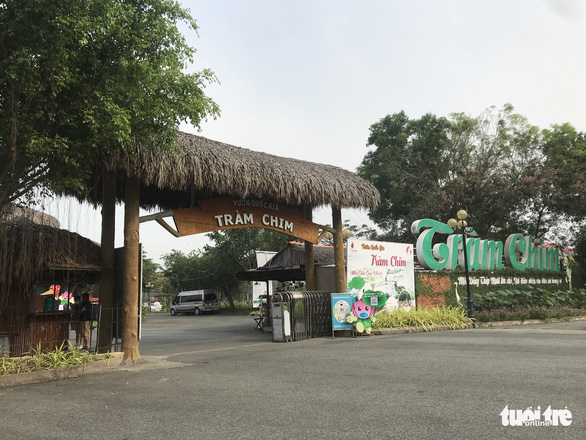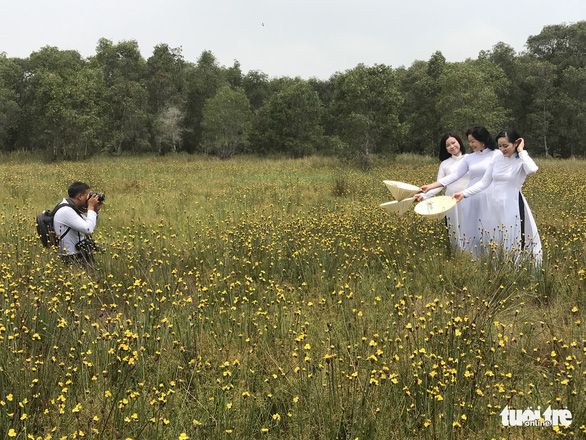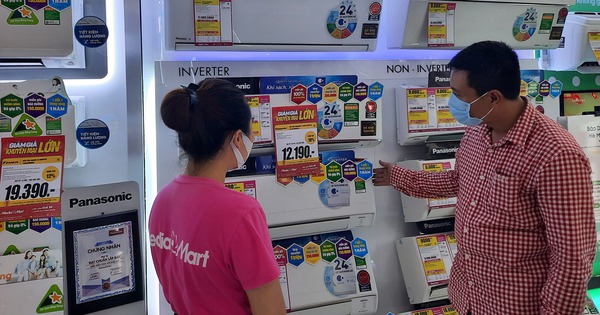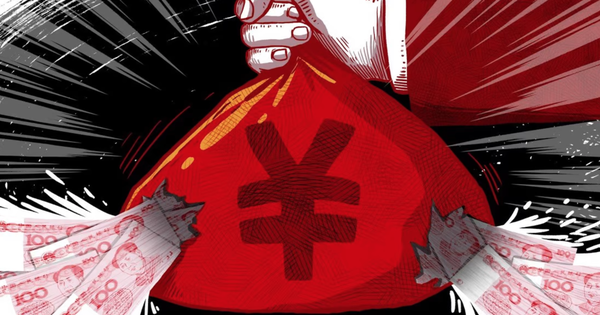Enterprises apply for industrial clusters near the ‘buffer zone’ of Tram Chim National Park

Scientists are concerned that the construction of an industrial cluster near Tram Chim National Park will affect biodiversity – Photo: DANG TUET
On May 30, Mr. Tran Thanh Nam – Chairman of the People’s Committee of Tam Nong district, Dong Thap province – confirmed: “So far, Dong Thap province has not approved the policy of building an industrial cluster, although the enterprise has proposed to open an industrial cluster. in the area near Tram Chim National Park.
The wish of the province may be to place far away from this national park area, specifically how much has to wait. The Provincial People’s Committee has assigned the district to work with the investor, so now waiting for the province to decide. If this industrial cluster is located, scientists must be invited to conduct a workshop to see if it affects Tram Chim National Park.”
Previously, the enterprise proposed to build an industrial cluster with a scale of 60 hectares, on the basis of expansion of the current Ha Thanh Concrete Joint Stock Company, located in Phu Hiep commune, Tam Nong district. Over a year, at this location, the enterprise has built a 25ha ceramic brick factory, with a capacity of 15 million m2 of bricks per year, with a total investment of over 1,100 billion VND.
The proposed industrial cluster location is adjacent to the factory, extending towards Tram Chim National Park – the 2,000th Ramsar of the world. In particular, the national park in the West is where the red-crowned cranes have come to live for many years. Rare species of crane often feed in zone A5 of the national park, closest to the location of the industrial cluster.
Dr. Duong Van Ni, an expert from the Mekong Delta Conservation Fund (MCF), who has studied conservation activities in Tram Chim for many years and is a member of the survey team, said that the location of the industrial cluster is located at completely in the buffer zone, 300-700m from the national park boundary (area A5). This has violated the provisions of the buffer zone of the Law on Biodiversity, dangerously affecting the Ramsar core area.
From the enterprise’s proposal, Tam Nong District People’s Committee issued an official dispatch on “moving the planning location to establish Phu Hiep industrial cluster and assessing the influence of Phu Hiep industrial cluster on Tram Chim National Park”. However, the proposal of Tam Nong district has not been approved by the People’s Committee of Dong Thap province.
Based on the map “Regional construction planning to 2030, vision to 2050 of Dong Thap province – Regional spatial development orientation map”. The entire area expected to build Phu Hiep industrial cluster located in the buffer zone of Tram Chim national park has been planned by Dong Thap province as a landscape conservation area.
The buffer zone of Tram Chim National Park is located around the core zone, including 5 communes Phu Tho, Phu Thanh B, Phu Hiep, Phu Duc, Tan Cong Sinh and Tram Chim town, with a total area of about 16,858 ha. Tram Chim National Park is recognized as the 2,000th Ramsar site in the world, and the 4th Ramsar site in Vietnam.

Vietnam has 9 world-recognised Ramsars, including Tram Chim National Park – Photo: DANG TUYET
“The location and activities of the project ‘Phu Hiep building material industry cluster’ both violate the buffer zone regulations of the Law on biodiversity conservation (2008) and have dangerous impacts on the area. core of Tram Chim National Park,” said Dr. Ni.
The report of the surveying experts sent to the People’s Committee of Dong Thap province, stated that wastewater from production, although the company has a plan to store and treat wastewater inside the industrial cluster, but the high terrain will cause water infiltration. horizontal. Worryingly, when the factory exploits all the clay layer, until the ancient alluvium layer is not able to waterproof, the leakage of wastewater into rivers and canals, penetrating deep into the groundwater is unavoidable.
Therefore, Dong Thap province has not yet agreed on the location of the industrial cluster proposed by enterprises. Provincial leaders assigned Tam Nong district administration to work with businesses to propose a plan to adjust the location of the industrial cluster to the border of Tan Hong district, avoiding affecting the environment of the national park.
Tram Chim National Park consists of 5 subdivisions, in which A1 and A5 are for tourism activities, A2 is a breeding ground for birds, A3 is for conservation of fish species, A5 is a main feeding ground for cranes – precious birds. in the Red Book. In recent years, cranes have not returned to Tram Chim, due to inappropriate management and human impacts on their feeding and sheltering grounds.
Currently, Vietnam has 9 Ramsars recognized by the world. In the Mekong Delta, in addition to Tram Chim, there are Ca Mau Cape National Park, U Minh Thuong National Park (Kien Giang Province) and Lang Sen Wetland Reserve (Long An Province).
at Blogtuan.info – Source: tuoitre.vn – Read the original article here



